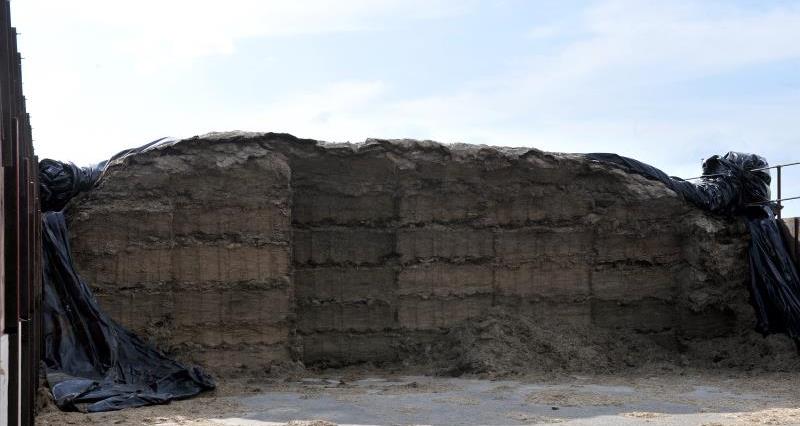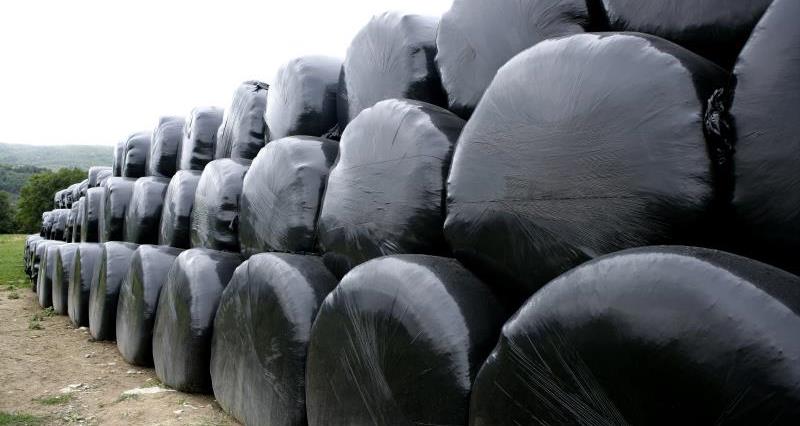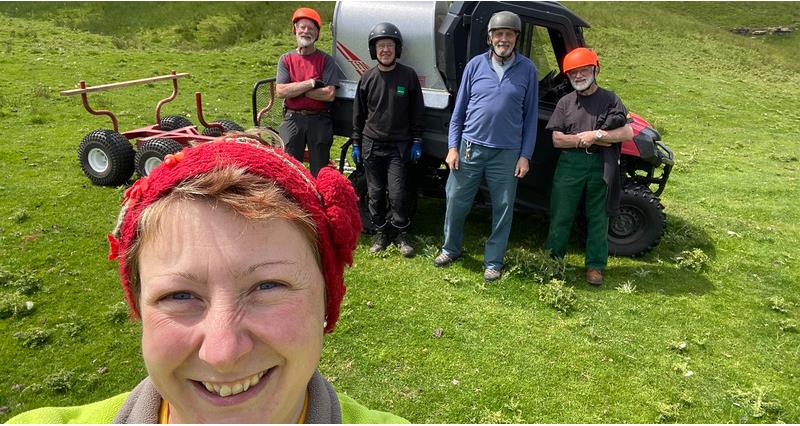Exposure to nitrogen dioxide through inhalation can has the potential to be fatal for both humans and livestock, and can also cause long-term respiratory illnesses.
This year, higher levels of nitrogen are being seen in silage crops such as maize and grass. Levels of nitrogen over 2% are considered to be high, thereby increasing risk.
Why is silage producing brown vapours?
Shortly after ensiling green plant material, oxygen is used in fermentation and the nitrates in the plant are released as nitric oxide (NO). This gas can escape from the freshly ensiled grass and combine with oxygen in the air to form toxic nitrogen dioxide (NO₂). Nitrogen dioxide production can be characterised by brown vapours that may smell of bleach.
Being heavier than air it usually settles on the floor of the pit, seeping out of the clamp.
Never assume that noxious gases may not be present if you cannot see/smell the evidence. Caution should always be taken where there is potential for noxious gases.
After further expose to the air it forms nitrogen pentoxide (N2O5), which then forms highly corrosive nitric acid when combined with water.
Since oxidation may occur in the lungs, nitrogen dioxide can produce permanent lung damage. The gas may dissipate after a few days but can cause some significant safety risks in the first three weeks.
With changes to the climate and more extreme weather conditions, nitrogen use in grass is being affected. As such, higher levels of nitrogen are being seen in silage crops such as maize and grass.
Levels of nitrogen over 2% are considered to be high and may result in the production of nitrogen dioxide and derivatives.
What can nitrogen dioxide do?
Inhalation of even a small amount of silage gas can result in serious and sometimes permanent lung damage, so if suspected exposure to nitrogen dioxide or nitric acid has occurred you should seek immediate medical help.
Severely irritating the upper respiratory tract resulting in inflammation of the lungs, inhalation may display as mild discomfort. However, the resulting fluid that collects in the lungs can be fatal.
Symptoms similar to pneumonia can occur one to two weeks after initial recovery from the exposure.
Other indications of nitrogen dioxide are yellowish staining of silage, wood, and other materials that come into contact with the gas.
If suspected exposure to nitrogen dioxide or nitric acid has occurred, seek immediate medical treatment.
When nitrogen dioxide oxidises to form nitric acid, it can cause the silage to turn bright yellow/orange. Nitric acid is highly corrosive when combined with water and can cause harm to the eyes and skin.
Inhalation of nitric acid can cause respiratory issues and potentially damage to the nervous system. Ingestion of nitric acid can be fatal.
Safety considerations
The following safety measures should be considered:
-
Block access to the silage pit/clamp for the first three weeks
-
Use appropriate, working respiratory protective equipment and ensure training is completed in its use.
-
Wear appropriate PPE when ensiling, handling silage and cleaning out clamps and pits.
-
Keep the silage pit/clamp well-ventilated with good air flow.
-
Allow gases to dissipate when accessing the silage in the pit/clamp.
-
Limit access to the silage pit/clamp to only those trained and able to use the respiratory protective equipment.
-
Use gas monitors to help identify if noxious gases are being produced.
Silage also can produce large quantities of carbon dioxide. Exposure to high concentrations of carbon dioxide can cause asphyxiation, as well as other significant health issues such as loss of consciousness.



